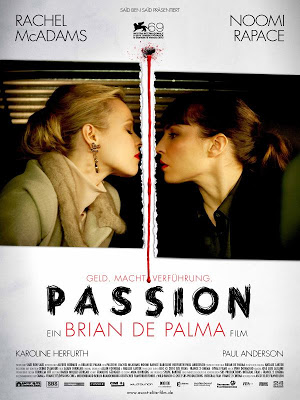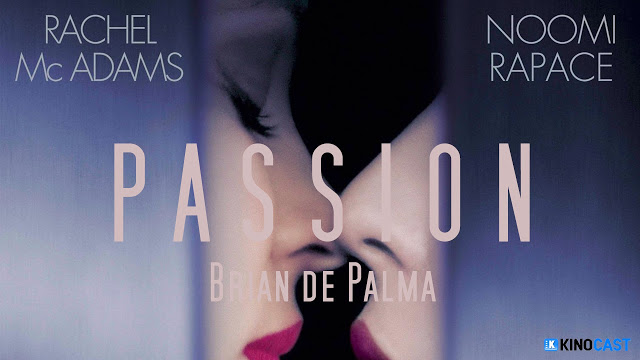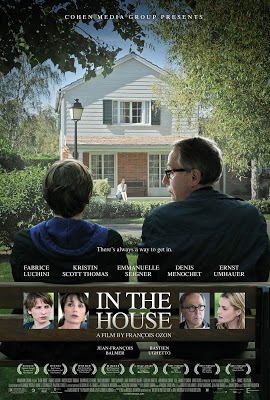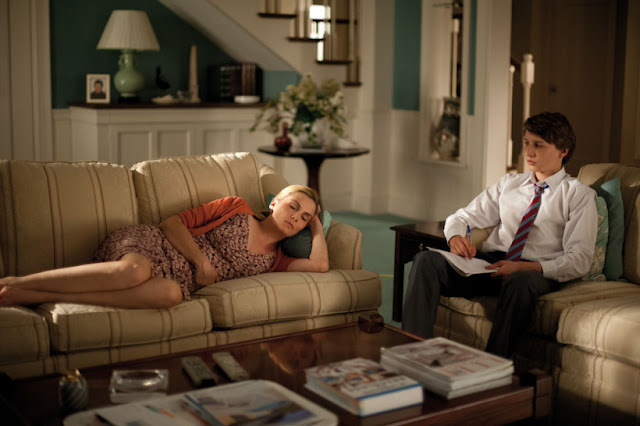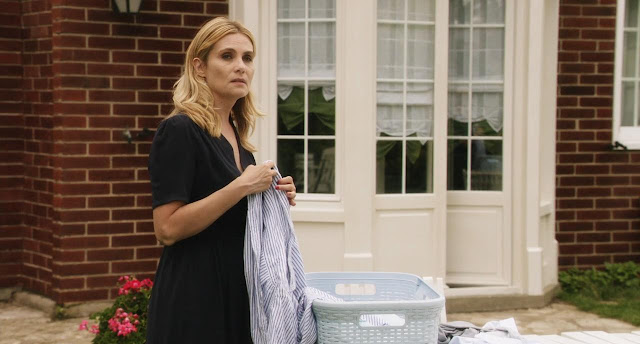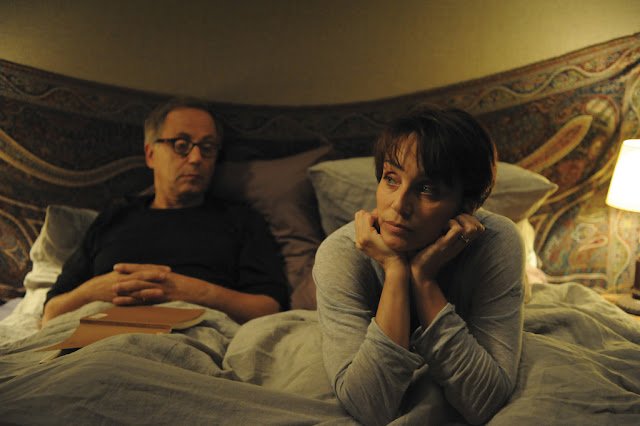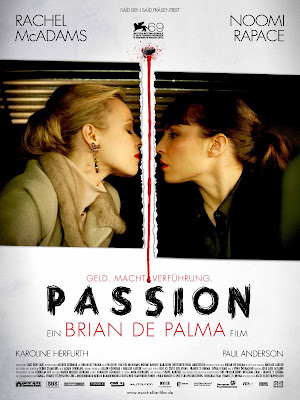 |
| Brian de Palma’s Passion |
Written by Amanda Rodriguez
Brian De Palma’s film Passion is a sleek, sexy, beautifully shot neo-noir thriller remade from Alain Corneau’s 2010 French film Crime d’amour (or Love Crime in English).
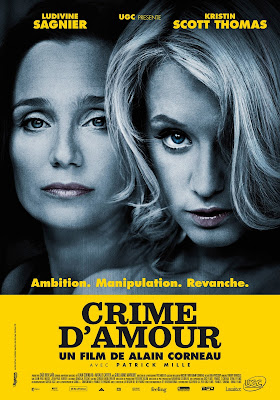 |
| Crime d’amour |
I always think it’s valuable to examine how films deviate from their source material because those are indications of deliberate choices that can say a lot (whether accidentally or intentionally). Honestly, the films aren’t tremendously different in an overt way, as most scenes are shot-for-shot, line-for-line identical, the basic differences being the languages of each and the uniquely lush, decadent darkness De Palma brings to his works. However, there are a few intriguing, telling differences that bear noting, and therein lies the meat of my analysis.
In Crime d’amour, the manipulative, power-wielding character Christine is played by the acclaimed Kristin Scott Thomas, who is considerably older than her protege, Rachel (pictured above). This creates a more maternal relationship between them, giving Christine the additional power advantage of age. The sexual energy between the two is therefore more illicit and is unreciprocated by the younger Rachel. However, in Passion, the actresses Rachel McAdams as Christine and Noomi Rapace (whom I always love, love, love) as Rachel are much closer in age, so the power dynamic between them rests purely on the weight of Christine’s corporate power and her ability to manipulate people however she sees fit. The sexual energy between the two is complicated, but palpable with love, hatred, desire, and emulation thrown in the mix. This dynamic ensures that the entire film, including the “love crime” that occurs, is about the relationship between these two women and not the man between them (with whom they’re both having sex). He remains ever a pawn they both use against each other.
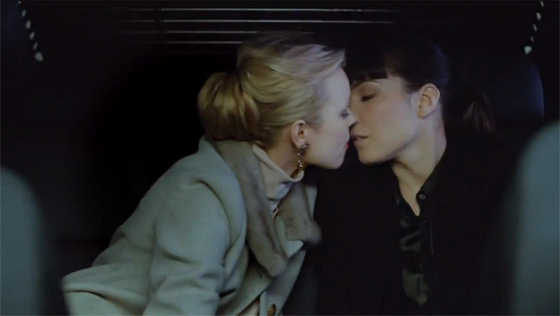 |
| Christine and Rachel kiss and later, at Christine’s insistence, profess love for each other. |
I won’t go into too great detail about the next difference between the two films because it’s spoiler-ridden, but they both approach the story’s murder in opposite manners. In Crime d’amour, we watch the plotting of the crime, unsure as to the perpetrating character’s sanity, motivation, and the final outcome of conviction versus acquittal. De Palma’s Passion, however, is more of a classic noir whodunit, where we’re constantly questioning guilt versus innocence, genuine emotion versus manipulation, and reality versus insanity/fantasy. Both approaches are engaging and enjoyable to watch, so I’ve got no complaints for either interpretation.
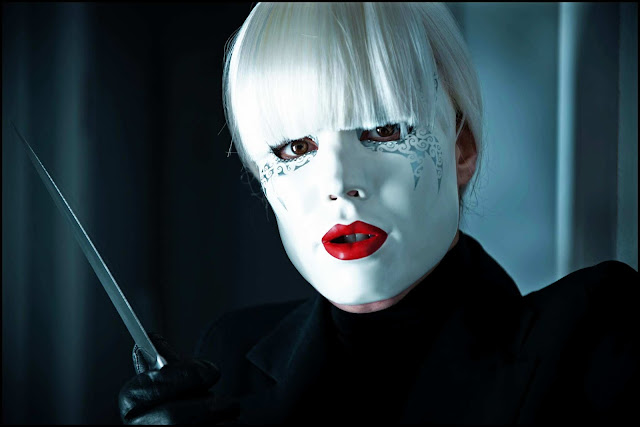 |
| The murderer wears a mask that’s a mold of the victim’s face to chilling effect in Passion. |
The last most significant change between the original film and its remake is the gender shift for Rachel’s assistant. In Crime d’amour, her assistant is Daniel, a man, and in Passion, her assistant is Dani (played by Karoline Herfurth), a woman. This shift makes only women the major players in Passion. We are left with a power struggle among three femme fatales, all smart, driven women who know what they want and use whatever means necessary to achieve their desires. This triumvirate of femme fatales, full of intelligence, secrets, and cunning, all battling for supremacy, is something I’ve never seen before on the silver screen. Their deep-laid game is impressive in its scope, and it is so exciting to watch three strong female characters unleashing their power.
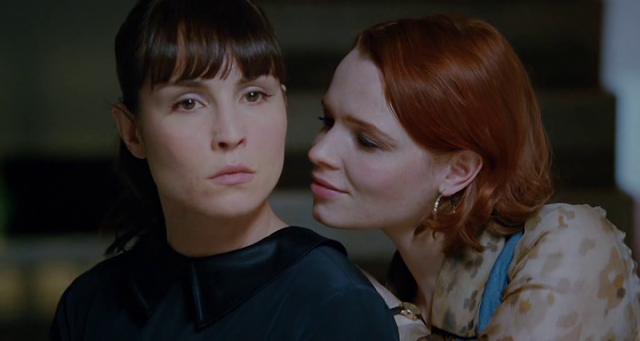 |
| The power dynamic shifts as assistant, Dani, reveals her knowledge to Rachel, mirroring the power play between Rachel and Christine. |
My major critique of both films, in particular Passion, is the very stereotypical female-ness of the power plays the films explore. Love, sex, desire, humiliation, as well as the manipulation of people and emotions for revenge or personal gain are all tactics traditionally coded as female. Though this tale takes place in the male-dominated corporate world, many (if not all) of the female characters’ actions are dictated by emotion. We are given to see the cycle of mentor and protege being corrupted, ending with the protege on top, first with the relationship between Christine and Rachel and then with Rachel and Dani. It is brutal, cutting deeper than the loss or gain of a promotion due to a superior’s greed, insisting that a hierarchy must exist between women; equality is not an option. Christine says to Rachel, “There’s no back-stabbing here. It’s just business”, and Rachel later repeats it back to her. Both times, the statement is a lie. Both times it shows the opposite to be true. The implication, of course, being that women aren’t capable of divorcing their feelings from business, that the manner in which they gain and keep success, even in a corporate setting, is through ruthless manipulation and, its darkest permutation: out-and-out emotional blackmail.
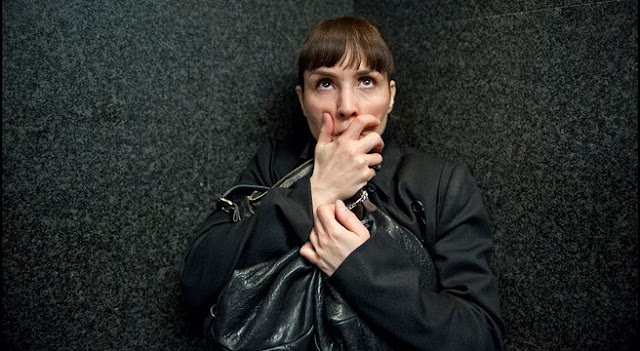 |
| Rachel devolves after Christine emotionally violates and humiliates her. |
Both Crime d’amour and Passion pass the Bechdel Test with flying colors. Unfortunately, these women are slaves to emotion, which is their ultimate weakness, their fatal flaw. I don’t think the films go so far as to suggest that women don’t belong in a highly competitive corporate work place and aren’t capable of being powerful, high-level executives, but I also think the films stop just short of insinuating that. However, Passion, in particular, really showcases strong female characters who are smart, successful, and ambitious without masculinizing them as is common in film portrayals of powerful women, especially in a corporate setting. These women are complicated and morally ambiguous people replete with compelling layers, leaving viewers wondering whether we hate or love them for their brash disregard for the rules and their deeply ingrained self-preservation instincts. Despite the films’ weaknesses (and our heroines’), it’s always refreshing to see powerful, multifaceted women taking charge of the big screen because it happens not nearly often enough.






